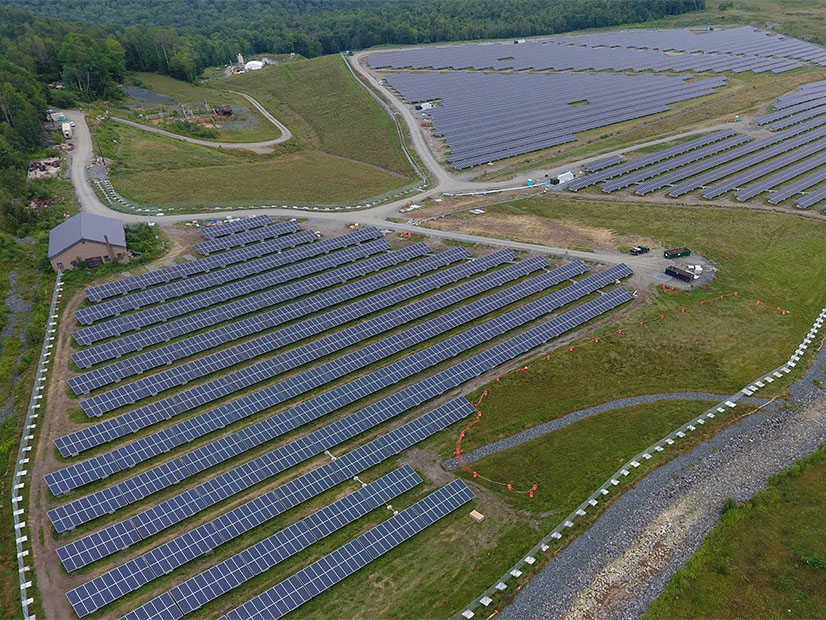
A 7-MW solar project now stands on land in Strafford, Vt., that was once the site of the largest copper mine in the U.S., and the Department of Energy is planning to use $500 million from the Infrastructure Investment and Jobs Act to put clean energy on similar former mine lands across the country.
The DOE’s vision for the Clean Energy Demonstrations on Current and Former Mine Land Program is outlined in a request for information released Wednesday. The program’s goal is to fund two to five demonstration projects in different parts of the country. At least two of the projects must be solar, the RFI says, but the DOE’s definition of “clean energy” also includes geothermal; direct air capture; fossil fuel generation with carbon capture, utilization and sequestration; energy storage, including pumped hydro; and advanced nuclear.
Hybrid projects combining two or more of the designated clean energy technologies are also eligible for the program. Technologies not eligible include bioenergy, wind, hydropower (other than pumped hydro) or recovery of critical minerals, and the federal funds must be matched, dollar for dollar, with nonfederal funds.
“Developing clean energy on mine lands is an opportunity for fossil fuel communities, which have powered our nation for a generation, to receive an economic boost and play a leadership role in our clean energy transition,” Energy Secretary Jennifer Granholm said in a press release announcing the RFI.
A recent report from the Environmental Protection Agency identified 17,756 mine land sites, totaling 1.5 million acres, which, if fully developed, could provide close to 90 GW of power. The report highlights the Elizabeth Mine solar project in Vermont as an example of clean energy development on previously contaminated mine lands. The project has cut carbon dioxide emissions by about 6,000 tons and produces enough electricity per year to power 1,200 homes, the report says.
The RFI also lays out key criteria DOE will apply for project selection. Projects should have “a reasonable expectation of commercial viability and also demonstrate the ability to lower barriers for future clean energy projects to access private sector financing,” the RFI says.
Economic development is another key criterion, with the DOE prioritizing projects that will create the most jobs, direct and indirect, and boost local economies in frontline fossil fuel communities. Projects will also be evaluated on their estimated levelized cost of energy, the GHG emissions produced by energy generation and how long it will take to complete them.
Beyond job creation, the RFI also puts a heavy emphasis on environmental and energy justice. The RFI defines energy justice as “achieving equity in both the social and economic participation in the energy system.” For example, the RFI calls on projects to “increase parity in clean energy technology access and adoption.”
With reasonable completion times a high priority, the RFI also acknowledges the considerable challenges mine land projects may face in terms of permitting and having to mitigate existing environmental hazards at mine sites. The RFI asks for input on how the topography or subsurface condition of mine lands might affect a site’s suitability for clean energy development. Information is also requested on federal, state and local permitting requirements and potential obstacles in existing regulations.
The goal is to provide replicable models and best practices for future projects. “The selected projects will chart a course to navigate federal, state and local rules and regulations for siting and grid interconnection, mine remediation, post-mining land use, environmental safety and other important processes to successfully develop and operate clean energy projects on current and former mine land,” the DOE announcement said.
The DOE added it is working with its national labs to gather data on existing clean energy projects on mine lands to help identify “promising sites” for clean energy development. The comment period on the RFI will close on Aug. 15, and the DOE is planning a series of webinars that “will collect region-specific perspectives on the challenges and opportunities of clean energy development on mine land.”


